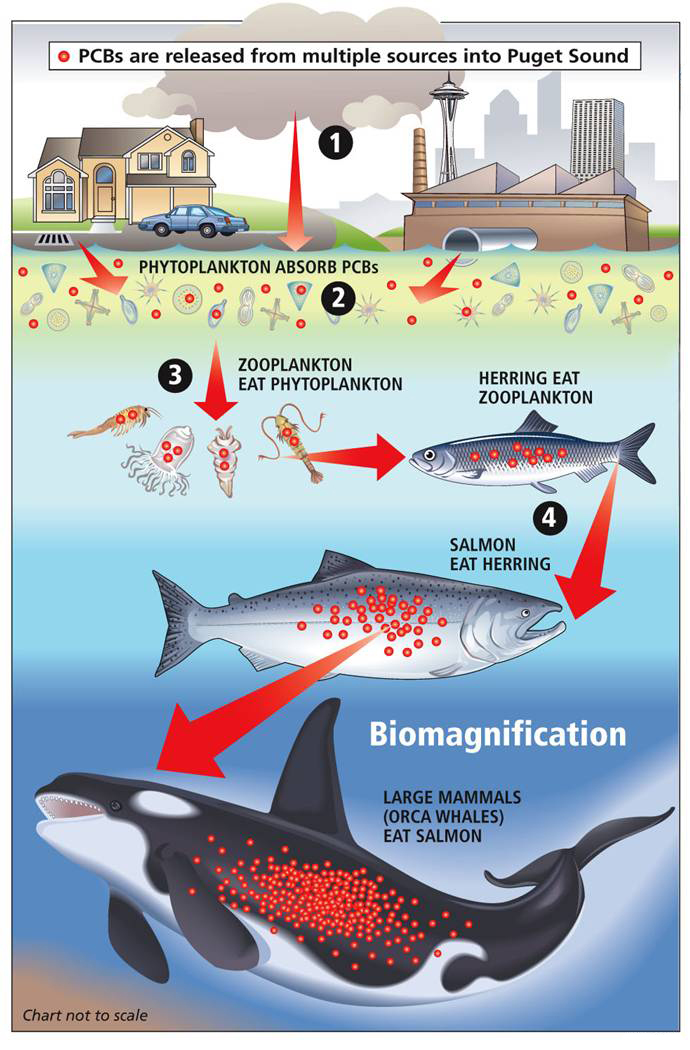Addressing priority toxic chemicals
We work with the Washington State Department of Health, along with industry and environmental stakeholders, to identify and take action against chemicals that pose the highest risks to human health and the environment. Working with partners, we develop chemical action plans to reduce or eliminate the use of these chemicals.
Strategy for addressing priority toxic chemicals
Working with the Department of Health, we are committed to identifying the most dangerous toxic chemicals and finding ways to reduce or eliminate them. Many of these priority chemicals are persistent, bioaccumulative, and toxic (PBTs). These chemicals are considered the "worst of the worst" and raise special challenges for society and the environment. PBTs can travel long distances and generally move easily between air, land, and water.
There are three criteria to be considered a PBT:
- Persistence — Chemicals that stick around in the environment for a long time cause more concern than those that quickly dissipate or react with other substances into more stable forms.
- Bioaccumulative — Chemicals that accumulate over time in plants, animals, and people are a threat because they build up through the food chain — and we are at the top of the food chain.
- Toxicity — Exposure to PBTs has been linked to a wide range of toxic effects in fish, wildlife, and humans. Toxicity includes both immediate effects, such as damage to the lungs, and long-term effects, such as increasing the risk of cancer.
How is Ecology addressing these chemicals?
To combat these threats to human health and the environment, we launched an initiative to reduce and phase out the use, release, and exposure of priority toxic chemicals in Washington. Our strategy focuses on one chemical or group of chemicals at a time.
Washington's PBT Rule establishes criteria for identifying priority PBTs, a list of PBTs, and the process for preparing and implementing a chemical action plan for each PBT or group of PBTs. We intend to amend the PBT rule to update the list of PBTs and streamline the rule.
Chemical action plans
Chemical action plans (CAPs), are comprehensive plans that identify, characterize, and evaluate all uses and releases of a specific chemical of concern. Each CAP provides recommendations for actions to protect human health and the environment. CAPs don’t ban or regulate chemicals, but the recommendations in the plans can lead to legislative or regulatory action. Ecology develops each CAP in collaboration with other agencies and experts, including representatives from businesses, local government, human health, and environmental advocates.Related links
Contact information
Chemical Action Plans Team
ChemActionPlans@ecy.wa.gov


